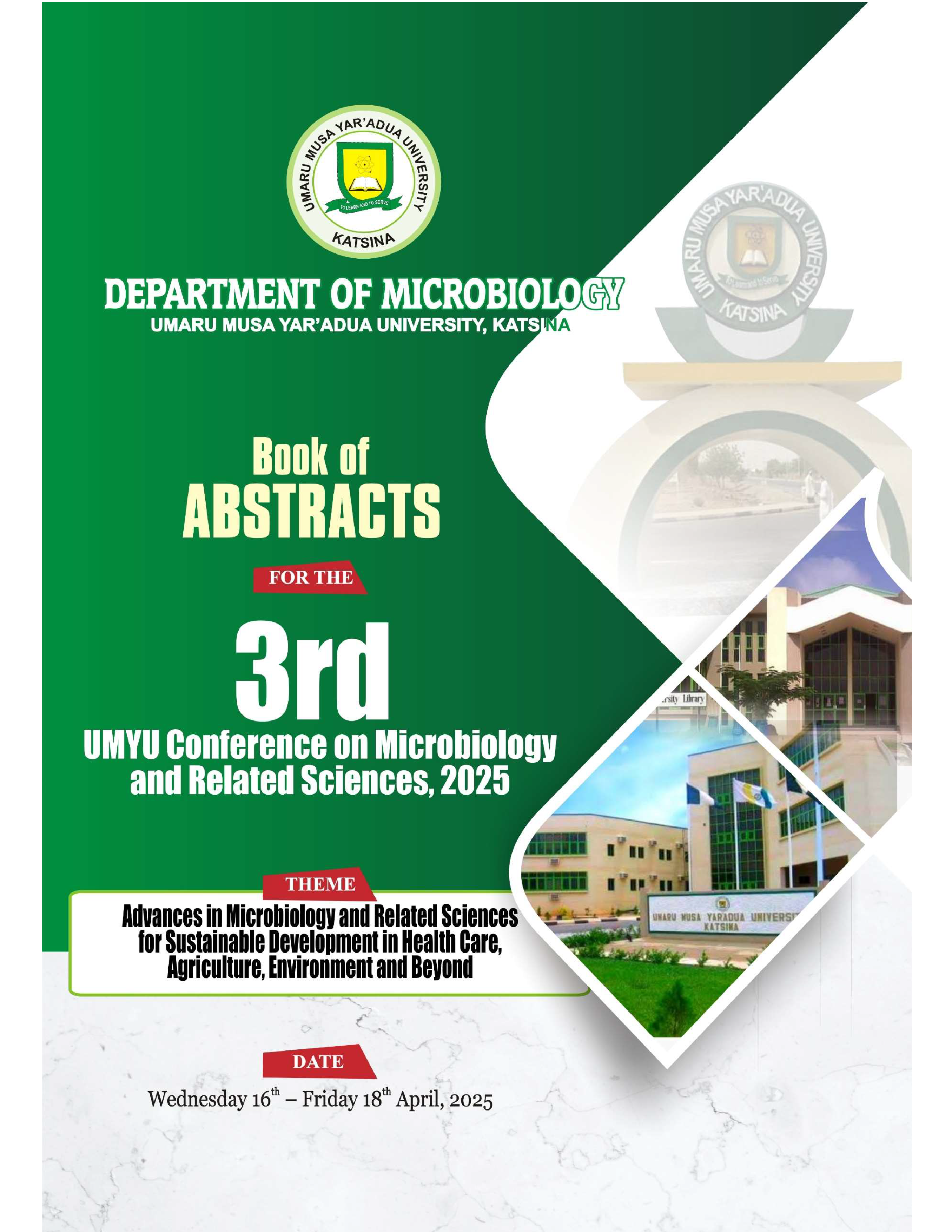Detection of selected Beta-lactam and Chloramphenicol Resistance Genes among Enterobacteriaceae Isolated from Selected fish farms in Katsina State, Nigeria
Abstract
The wide and unregulated use of antimicrobial in Aquaculture has led to the emergence of Antibiotic-Resistant bacteria (ARB). Information on the epidemiology and spread of ARB and Antibiotic Resistance Genes (ARGs) among fish farms in Katsina State, Nigeria is scarce. Therefore, this study isolated and characterized selected ARB and ARGs among antibiotics resistant Enterobacteriaceae from fish farms within Katsina, Katsina State, Nigeria. A total of 100 fish samples were randomly collected from five different farms (A, B, C, D and E) between May and June, 2023. Thereafter, total bacteria count, biochemical identification and characterization were determined by standard microbiological techniques. Isolates antibiotics resistant profilings were determined by Kirby-Bauer disk diffusion method while Multi-Drug Resistant (MDR) isolates were selected based on their resistance to ≥ 3 classes of antibiotics. MDR isolates were further characterized by Vitek-2 compact system. Afterwards, among MDR isolates, PCR was used to amplified beta-lactam (blaTEM, blaSHV, and blaCTX-M) and chloramphenicol (catI) resistance genes. The total bacterial colony counts ranges between 2.06 x 105 and 9.6 x 104 cfu/ml while highest (2.06 x 105) was observed on farm E. A total of 49 Gram-negative bacteria that includes E. coli, Proteus spp, Klebsiella pneumoniae, Pseudomonas aeruginosa and Salmonella spp were identified. Proteus spp was the most prevalent among samples from farms A (12.24%), D (8.16%) and E (12.24%) while highest (8.16%) on farm C was E. coli. Among the bacteria, highest (95.9%) antibiotic resistance was observed to erythromycin, followed by chloramphenicol (48.9%) while the least (2%) was to gentamycin. Seven (14.3%) of the isolates were MDR. Vitek-2 identified Proteus mirabilis (3/7, 57.14%) as the most prevalent MDR bacteria. The most common resistant phenotypes among the MDR were resistance to cefoxitin, chloramphenicol, erythromycin, and tetracycline. Antibiotics resistance genes detected among the MDR isolates include: blaTEM (5/7), blaSHV (3/7), blaCTX-M (1/7) and Cat1 (1/7). In conclusion, detection of various antibiotics resistance genes among Enterobacteriaceae from catfish within fish farms in Katsina metropolis; highlights a potential public health concern. Therefore, underscore the urgent need for monitoring and controlling antibiotics use in aquaculture to mitigate the spread of resistance in both environmental and clinical settings.
Key Words: Enterobacteriaceae, beta-lactam, resistance, genes, f
ish.
Published
How to Cite
Issue
Section
License
Copyright (c) 2025 UMYU Conference of Microbiology and Related Sciences

This work is licensed under a Creative Commons Attribution-NonCommercial 4.0 International License.


